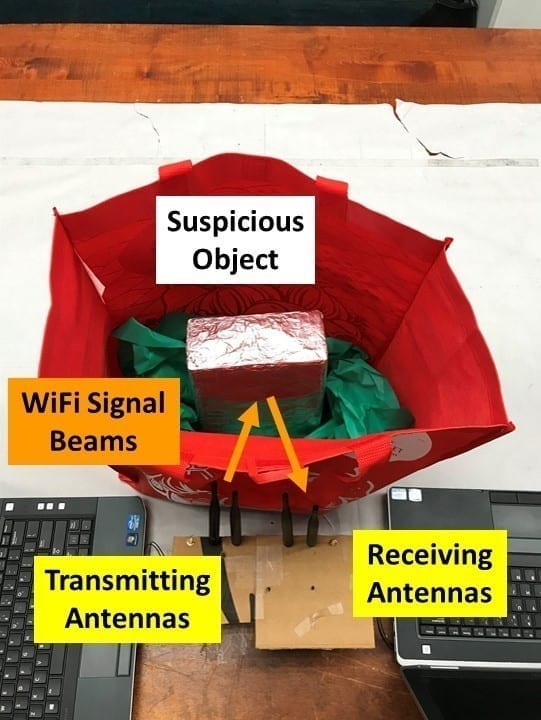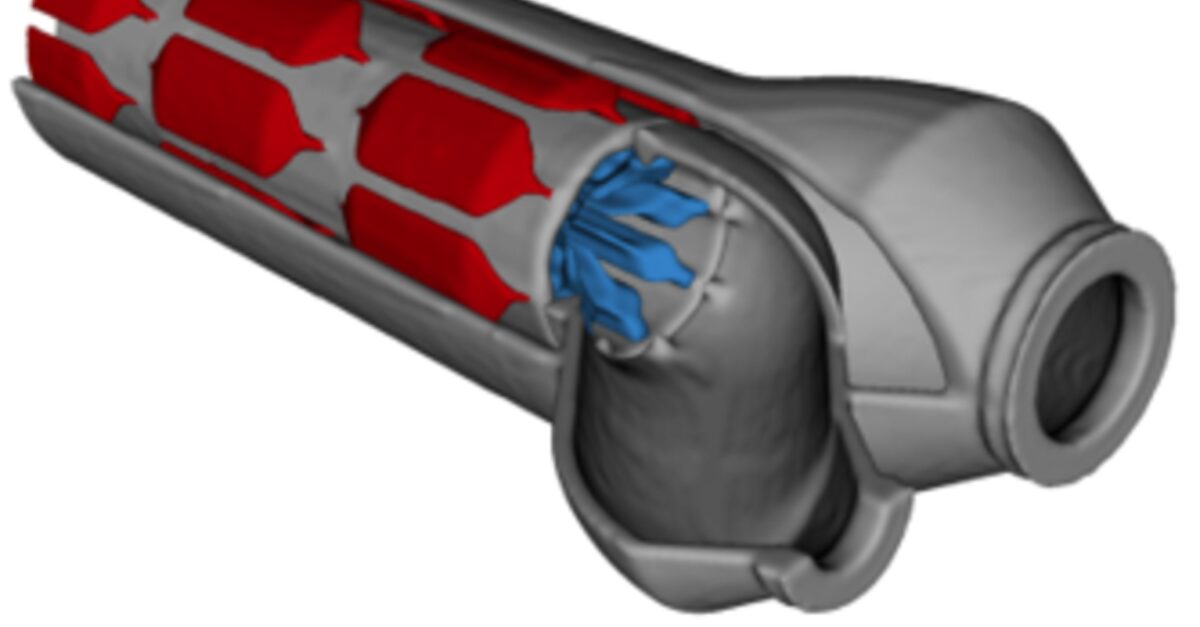
via UC Santa Barbara
ECE Professor Yasamin Mostofi and researchers’ new method enables WiFi signals to count a stationary seated crowd, using their natural body fidgets
Researchers in UC Santa Barbara professor Yasamin Mostofi’s lab have enabled, for the first time, counting a stationary seated crowd using WiFi signals, and without relying on people to carry a device. The technique, which also counts through walls, needs only a wireless transmitter and receiver outside the area of interest where the crowd is seated. It has a variety of applications, including smart energy management, controlling the crowd size during a pandemic, business planning and security.
“Our proposed approach makes it possible to estimate the number of seated people in an area from outside,” said Mostofi, a professor of electrical and computer engineering at UCSB. “This approach utilizes only the received power measurements of one WiFi link, does not rely on people to carry a device and works through walls.”
The proposed methodology and experimental results appeared in the recent 19th ACM International Conference on Mobile Systems, Applications, and Services (MobiSys).
In the team’s experiments, one WiFi transmitter and one WiFi receiver (both off-the-shelf) are in an area where a number of people are seated. The transmitter sends a wireless signal whose received power is measured by the receiver. By using only such received signal power measurements, the receiver estimates how many people are present — an estimate that closely matches the actual number.
This innovation builds on previous work in the Mostofi Lab, which has pioneered sensing with everyday radio frequency signals such as WiFi since 2009. For instance, their 2018 paper “Crowd Counting Through Walls Using WiFi” showed how WiFi can count a crowd of mobile people. However, people had to move around to be counted.
“Counting a stationary seated crowd is a considerably challenging problem due to the lack of major body motion,” said Mostofi. Her lab’s success in this endeavor is due to the new proposed methodology they developed.
“While the people in the crowd are stationary, i.e., with no major body motion except breathing, they do not stay still for a long period of time and frequently engage in small in-place natural body motions called fidgets,” Mostofi explained. “For instance, they may adjust their seating position, cross their legs, check their phones, stretch, or cough, among others.”
The researchers have proposed that the aggregate collective natural fidgeting and in-place motions of a seated crowd carry crucial information on the crowd count, and have shown, for the first time, how to extract the aggregate fidgets and count the total number of people based on them.
Original Article: “Don’t Fidget! WiFi Will Count You”
More from: University of California Santa Barbara
The Latest Updates from Bing News & Google News
Go deeper with Bing News on:
WiFi sensing
- Get the Unique Wireless Alienware Gaming Mouse at the Best Amazon Price Everon May 3, 2024 at 11:49 am
The Alienware AW610M with a unique design and great accuracy is available at just $59.99 during the Amazon Gaming Week event.
- Best Fitbit deals: Save on Versa 4, Charge 6, and Sense 2on May 3, 2024 at 1:28 am
Similar to Prime Day deals, we've seen tons of deep discounts on Amazon-owned brand products such as Echo, Ring, and Blink smart home devices, Kindles, Fire TVs, and Eero mesh Wi-Fi devices.
- Budget Logitech Wireless Gaming Mice More Affordable Than Everon May 2, 2024 at 2:59 pm
The mouse features a high-quality Hero sensor, gaming-grade Lightspeed wireless connectivity, and a classic design. $30 at Amazon ...
- The wireless technologies driving low latency manufacturingon May 1, 2024 at 4:07 am
The key wireless technologies at play are Wi-Fi 5/6, 5G, and yes, even Bluetooth. All can play a key role in lowering latency and bringing measurable productivity gains to the workshop or factory ...
- This Asus Wireless Gaming Mouse Is as Cheap as Ever at $59.99on April 23, 2024 at 10:21 am
Amazon is offering a great deal on the Asus ROG Keris Wireless AimPoint with tri-mode connectivity and a super-precise 36,000 DPI sensor.
Go deeper with Google Headlines on:
WiFi sensing
[google_news title=”” keyword=”WiFi sensing” num_posts=”5″ blurb_length=”0″ show_thumb=”left”]
Go deeper with Bing News on:
Crowd counting
- Johnny Mercer 'feeling pretty chipper' despite Tory election bloodbath as he explains absence from Plymouth counton May 3, 2024 at 7:56 am
But Mr Mercer explained that he was not at the count because one of his children was ill ... I wasn't even there - I have a child who is sick at the moment - but such is the class of this crowd. The ...
- Video: Crowd cheers as man eats 700 cheese balls in under 30 minuteson May 1, 2024 at 8:10 pm
"You know, so many people were counting on me. So despite hurling up in my mouth a little bit, I kept it down and made the people proud a little bit, but if not, sorry." The cheesy accomplishment ...
- Video: Crowd cheers as man eats 700 cheese balls in under a half houron May 1, 2024 at 7:05 pm
The man's goal was to eat 700 cheese balls in under 30 minutes. He washed them down with water in front of hundreds of spectators.
- She is 65 but I’m not counting years, only blessings. Right Cindy Lou?on May 1, 2024 at 7:01 pm
She doesn’t look 65. But that will be her age on May 2. My dear sister Cindy Lou will officially join the Senior Citizens crowd. How did that happen so ...
- Revealed: Mysterious benefactors behind Mike Lindell's push to hand-count ballots | Opinionon April 14, 2024 at 4:52 am
This article was co-published in partnership with The Guardian. Votebeat is a nonprofit news organization reporting on voting access and election administration across the U.S. Sign up for our free ...
Go deeper with Google Headlines on:
Crowd counting
[google_news title=”” keyword=”crowd counting” num_posts=”5″ blurb_length=”0″ show_thumb=”left”]










